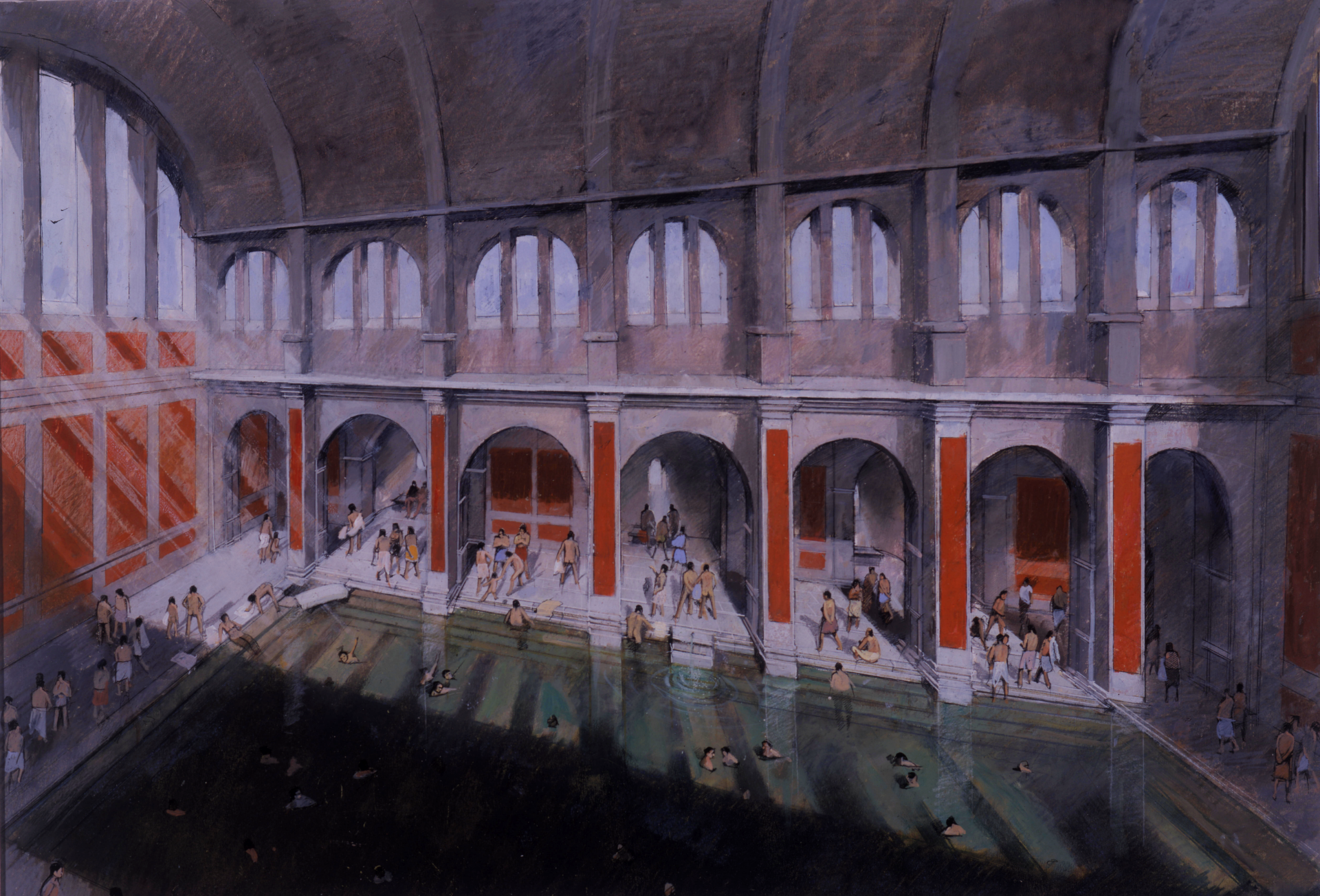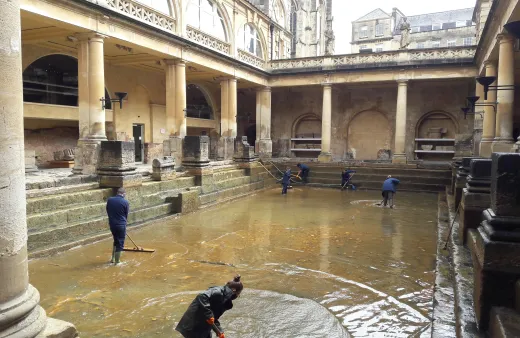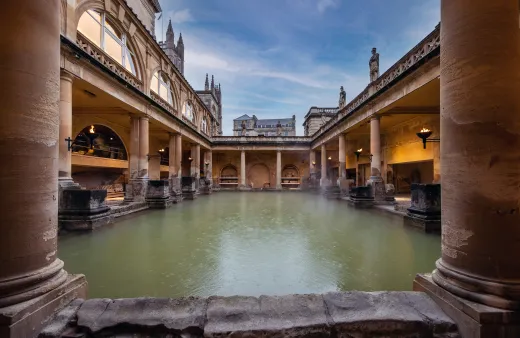
Our Operations Team manage the process of draining, cleaning and refilling the Great Bath. In some stages they still make use of the Roman infrastructure - proving that Roman engineering was built to last.
DAY ONE
10am: Initial draining of the King’s Spring where the hot water rises (beneath the smaller medieval King’s Bath). After draining, the empty Spring chamber is then cleaned with hoses and brushes and algae, which grows quickly in the hot spring water, is swept away.
11am: The King’s Spring chamber is then re-filled with hot water rising from the ground below. This doesn’t take too long, around a couple of hours.
At the same time the draining of the Great Bath begins by first cutting off its supply of water. A valve controlling the flow from the Spring to the bath is closed and the water diverted into a Roman drain instead. This water flows directly along the drain for a half a kilometre and discharges into the nearby River Avon. Its route takes it through the Roman Baths Museum where you can see it flowing through a glass floor beneath your feet.
Meanwhile, at the Great Bath, a Roman sluice gate is opened in the north east corner and the sluice paddle which retains the water in the Great Bath is removed, allowing the water to flow out. This flow also enters the huge Roman drain that is taking water from the Spring to the river. This is a method which hasn’t changed for two thousand years.
11am-4pm: The Great Bath takes several hours to drain. It is a controlled process because if all the water went out at once it would, in combination with the flow from the Spring, flood the drain entirely. Around 500 cubic metres flows out through the sluice. As the water level reduces, Operations Team staff climb down the original Roman steps into the Great Bath and begin to clean down the sides with soft brushes. This is a gentle operation as we take care not to damage the Roman stonework.
4pm: Assuming no blockages in the drain and a low water level in the River Avon allowing the flow to move quickly, water in the Great Bath should now be at a suitable level for more staff to enter wearing wellington boots. They start to clean the bottom of the bath and break up the algae there using brushes and sponge swimming pool brushes. A water hose is also used to assist with washing down the sides. Again, this is a careful operation as the lead sheets lining the base of the bath are not in perfect condition.
This is all done during normal opening hours in full view of the visiting public and most visitors enjoy the spectacle.
5pm - 6pm: Once day visitors have left the Great Bath site, a pump is set up and used to help remove the final residues of the water and algae. This sometimes continues into the evening.
The Roman Baths Collections team may also complete a visual inspection of the Great Bath checking the condition of the stonework and lead sheets.
An external contractor may also be used to assist with the final clean and the last residues are then swept away.
11pm-midnight: The paddle is put back and the sluice gate is closed, and the Great Bath is once more refilled with water from the King’s Spring at the rate of 13 litres per second.
DAY TWO
3pm: The Great Bath is now refilled.
In between the draining and cleaning of the Great Bath which normally takes place around four times a year, the surface of the water is regularly swept and hosed down, usually each morning before opening. This clears any floating algae that may rise to the surface and keeps it in pristine condition for viewing.








